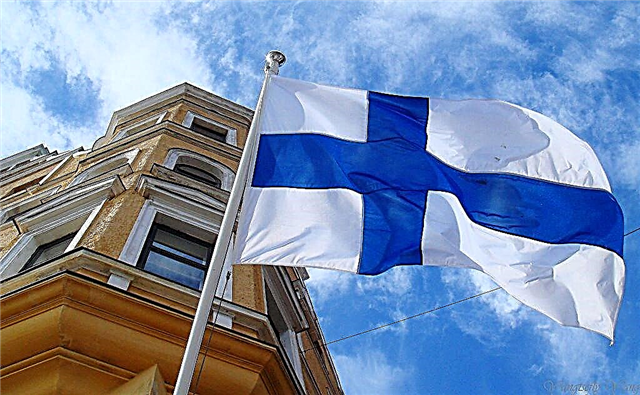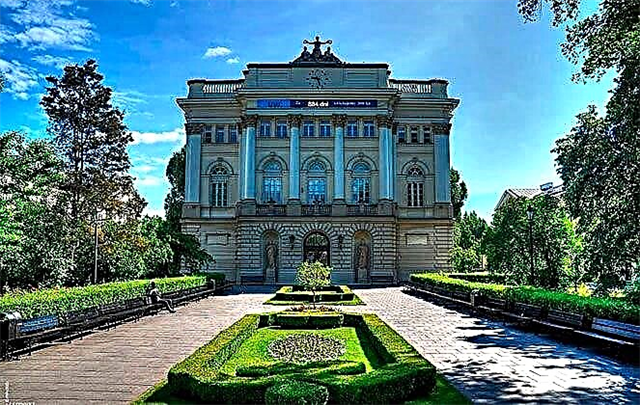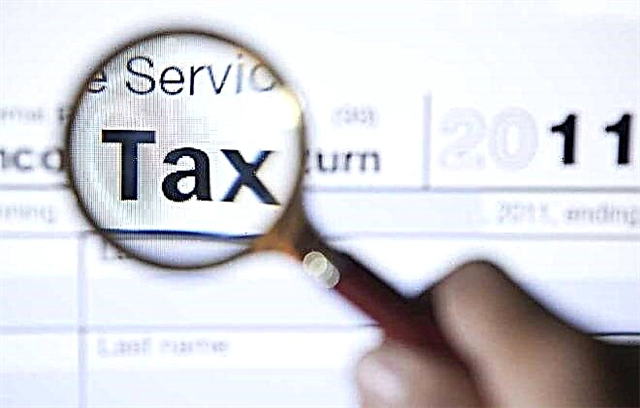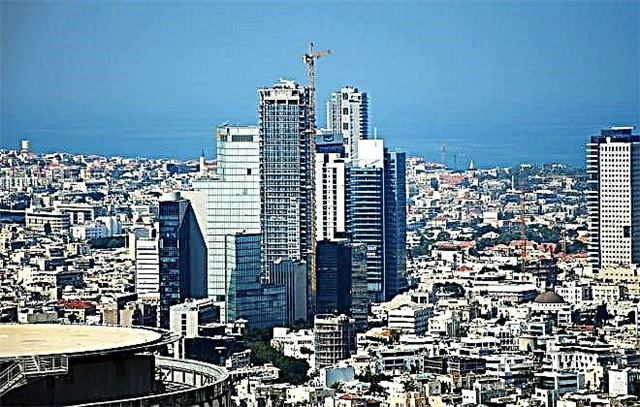Despite the permanent state of war, the economy in Israel has shown stable growth over the past 30 years. The country is one of the most industrialized in the region, occupies 53rd place in the ratings for ease of doing business, 30th for competitiveness, 2nd (after the USA) for the number of new companies, has the highest representation in NASDAQ. Any state could be proud of such indicators. Without exaggeration, Israel is a true Middle Eastern miracle.

Features of the economic model
The Promised Land today is a highly industrialized and agrarian state with a mixed market economy. Israel's income is largely determined by the import of oil, grain, natural raw materials, and military equipment. The limited natural resources have not become an obstacle to the significant progress achieved through the intensification of industrial and agricultural production.
The state is critical in key industries:
- electricity and water supply;
- railway transport;
- oil refining.
Funds from Europe and the United States contributed to the creation of a modern Israeli economy. The main economic levers are now under the control of about twenty financial and industrial groups.
The country is divided into economic zones:
- Tel Aviv is the main center of culture, industrial, commercial, financial activity.
- Haifa is the main sea gate, the center of heavy industry, shipping, fishing, forestry.
- Jerusalem is the capital of the state.
- South and West. The main occupation is irrigated agriculture.
Gross domestic product
Israel's GDP per capita is steadily increasing, and in 2021 it exceeded $ 34 thousand. According to the IMF, the country is ranked 37th in the world for this indicator. The share in global GDP was 0.245%. The aggregate is estimated at $ 350 billion, and over the past year has risen by 2%.
The service sector prevails in the structure - about 70%, followed by industry - 28%, agriculture - about 2.5%. Trading Economist's long-term outlook for the economic situation in Israel is favorable. GDP growth rates are expected to double by 2021, the currency will devalue slightly against the dollar, and the unemployment rate will drop by 10%.
Gross national product
GNP at the end of the last reporting period exceeded $ 330 billion. The per capita indicator reached $ 44 thousand, in purchasing power parity ─ $ 41 thousand.
Sources of the budget
Israel's budget is formed from fees, taxes (about a quarter), and foreign tourism. For 2021, excluding debt payments, government spending is planned in the amount of 397.4 billion shekels ($ 109 billion), which are distributed as follows (in billion shekels):
- education ─ 60;
- healthcare - 38;
- social needs ─ 13;
- disability benefits ─ 2.
The lion's share of the costs will go to Israel's military budget. It is planned to spend 73 billion shekels on defense, which is approximately $ 20 billion. This is the largest expenditure item.
The budget deficit should not exceed 2.9% of GDP and will be reduced to 2.5% in 2021. Compared to 2021, the budget has increased by 4.3%, and since 2015, by almost a quarter.
The total national debt today is $ 230.5 billion, or $ 27 thousand for each resident. Israel's external debt over the past five years has decreased by $ 3 billion and today it is $ 93 billion.
Characteristics of industry and energy
Immediately after the formation of the state, enormous efforts were made to develop agriculture, livestock, water construction, and the creation of energy and transport infrastructures.
Today, the country has developed mechanical engineering, metallurgy, pharmaceuticals, the development and production of computer technology, robots, including military bots. The production of tobacco products and foodstuffs has been established.
Israeli factories produce planes, drones, armored vehicles, communications, which are considered the best in the world.
A huge stock of qualified personnel made it possible to orient the industry towards science-intensive high-tech goods based on its own scientific and technical developments. The world level has been reached in the field of medicine, agriculture, telecommunications, chemistry, and diamond processing. Approximately 40% of all diamonds are cut in the Holy Land.
Israel produces for export chemicals, weapons, pharmaceuticals, medical, unique electronic equipment, good wine, high-quality goods from plastic and rubber.

Energy demands almost completely cover the import of oil (100%) and coal (20%). On the other hand, the country does not buy, but even sells, electricity from the Palestinian Authority.
Gas reserves of the Tamar and Leviathan fields are sufficient for domestic needs and even export. In 2021, it is planned to build the EastMed pipeline to Italy with a throughput capacity of up to 20 billion cubic meters. m per year. Commissioning is scheduled in five years.
Energy in Israel is considered one of the most promising industries. The country is a recognized leader in the use of alternative energy sources: home solar panels, wind turbines, geothermal resources.
Natural resources
The Holy Land turned out to be not very rich in minerals. There are small oil reserves, but production (from 9 to 16.5 million tons per year) does not cover all needs.
There are large deposits of phosphorites in the Negev Desert. The mines are connected by rail to Haifa, where processing takes place.
They also extract clay for bricks, quartz sand, from which glass is made, and in quarries throughout the country ─ marble, building stone.
Salts of potassium, magnesium, bromine, iron, used in agriculture and pharmaceuticals, are extracted from the Dead Sea by industrial methods.
There are copper mines in Mihrot-Timna, but after the collapse of ore prices, they are mothballed.
Agro-industrial complex
Agriculture in Israel was highly developed: it was able to feed a growing population, and quickly became a major export item. The area of cultivated land is approximately 445 thousand hectares, of which irrigated ─ at least 221 thousand hectares.
Today there are about 750 kibbutzim, but the share of the rural population is gradually decreasing due to migration to cities. Nevertheless, one Israeli farmer is able to feed more than 50 people (according to various estimates, up to 95).
The main crops that are grown in Israel:
- wheat;
- peanut;
- cotton;
- sunflower;
- fruits;
- vegetables.
The unique experience and technologies of growing under the film make it possible to harvest several harvests of tomatoes, cucumbers, and peppers every year. Almost everything from fruit grows here, including persimmons, dates, olives, grapes, kiwi, mango, all types of citrus fruits, which are partially exported.
The meat industry in Israel is highly technological. Produces large, small cattle, poultry. The average Israeli cow produces 12 thousand liters of milk per year, which is more than the average in Europe and the United States.
The fish are raised in ponds, and sardines are fished in the Mediterranean. The country is 93% self-sufficient in food, with the exception of coffee, sugar, vegetable oil.
Isn't this Israel's true economic miracle?
Transport and communication system
The most common vehicle is a car. The length of the highways exceeds 17 thousand km. The fleet of freight transport numbers about 180 thousand, cars - over 850 thousand units. Highways connect all corners of the country.
The railway network has a length of about 900 km, connecting the north, west, center, east of the country. It is currently being intensively modernized.
The main seaports are Haifa, Ashdod, Eilat. International air travel is mainly carried out through Ben Gurion Airport (near Tel Aviv).
Financial sector
The Stock Exchange (founded in Tel Aviv in 1953) is the only one in the country that cannot boast of large turnovers. Gold and foreign exchange reserves have doubled over the past ten years. Today they amount to approximately $ 115 billion.
Israel joined the WTO, concluded free trade agreements with the European Union and the United States. The negative trade balance is offset by the diversification of export opportunities.
The basis of the banking system is the State Bank of Israel (founded in 1954). There are several commercial (local and foreign branches) dealing with mortgage and investment lending.
Since September 1985, the currency has been the new shekel (ILS), which has been freely converted for settlements in the international CLS system.
The amount of cash in circulation today ─ 82 billion ILS. This is about 580 million banknotes, 2.5 billion coins. On January 1, 2021, a law came into force limiting the circulation of amounts of "live" money over 11 thousand shekels.

Last year, the maximum amount (up to 50 thousand shekels) that can be imported and exported from the country without a declaration was halved.
International economic relations
The main trading partners are the USA and the EU, although Israel's products are supplied to dozens of countries on all continents. The limited domestic market and the lack of natural resources dictate the need to expand export opportunities. Traditionally, the country has a negative trade balance (at the beginning of the year - $ 2.4 billion). The trade deficit is covered partly by tourism, export of services, but mainly by foreign investment.
The decree on free imports to Israel made it possible to enter new markets, in particular, Chinese and Russian. Traditional export items are high-tech equipment, pharmaceuticals, diamonds; imports ─ crude oil, grain, sugar, diamonds. Israel is one of the largest arms traders.
A significant amount of wheat is imported, but the country independently provides for the rest of the food needs.
In the first quarter of 2021, trade turnover with the Russian Federation amounted to $ 714 billion, an increase of almost 25% compared to the same period in 2017. Russian exports rose to $ 487 billion, showing an increase of 29% compared to the same period in the previous period.
Imports of goods to Russia from Israel at the same time grew by 17% ($ 227 billion). Israel's share in Russia's foreign trade turnover is steadily growing, despite the sanctions (it takes 38th place, a year earlier it was 40th).
Imported from Russia:
- oil, distillation products;
- pearls, precious, semi-precious stones, precious metals, bijouterie;
- cereals;
- ferrous, non-ferrous metals;
- organic chemistry;
- paper, cardboard.
Tourism industry
Tourism, especially medical tourism, and pilgrimage are major revenue streams. Visa-free travel to a number of countries, including Russia and Ukraine, has helped boost the industry.
According to the Israeli Ministry of Tourism, about 4 million tourists visited the country in 2021.
The indicator increased by 13% compared to 2021 and by 38% compared to 2016. Tourism revenues exceeded 24 billion ILS ($ 6.2 billion).
Labor market
The unemployment rate here is one of the lowest in the world - about 4%. Almost half of the 8.8 million population is employed - 3.9 million people. There are about 175 thousand unemployed citizens.
One fifth of the employed population works in the manufacturing industry. More than half of the jobs are provided by the Tel Aviv region, where almost 4 thousand enterprises work. Haifa accounts for almost a third, the South region ─ 13%, Jerusalem ─ 7%.
Citizens' income
Inflation in Israel is one of the lowest at around 1.2% per year.
Since December 2021, the minimum wage has been officially set at 5,300 shekels ($ 1,447). The average is twice as high today and is on an upward trend, according to Trading Economist.
The budget for the current year plans to reduce the working week to 42 hours without reducing the level of wages. The law has already entered into force, the calculation is made on the basis of 182, and not 186 hours, as before. At the same time, the hourly rate increased.
Conclusion
From an economic point of view, the country of Israel is developed, but not yet 100% self-sufficient. The service sector predominates in the structure of the economy. The unemployment rate is one of the lowest in the world. GDP per capita in 2021 amounted to more than 34 thousand dollars.
Israel is 93% self-sufficient in food. Main export items: pharmaceuticals, chemical products, electronic equipment, weapons.











